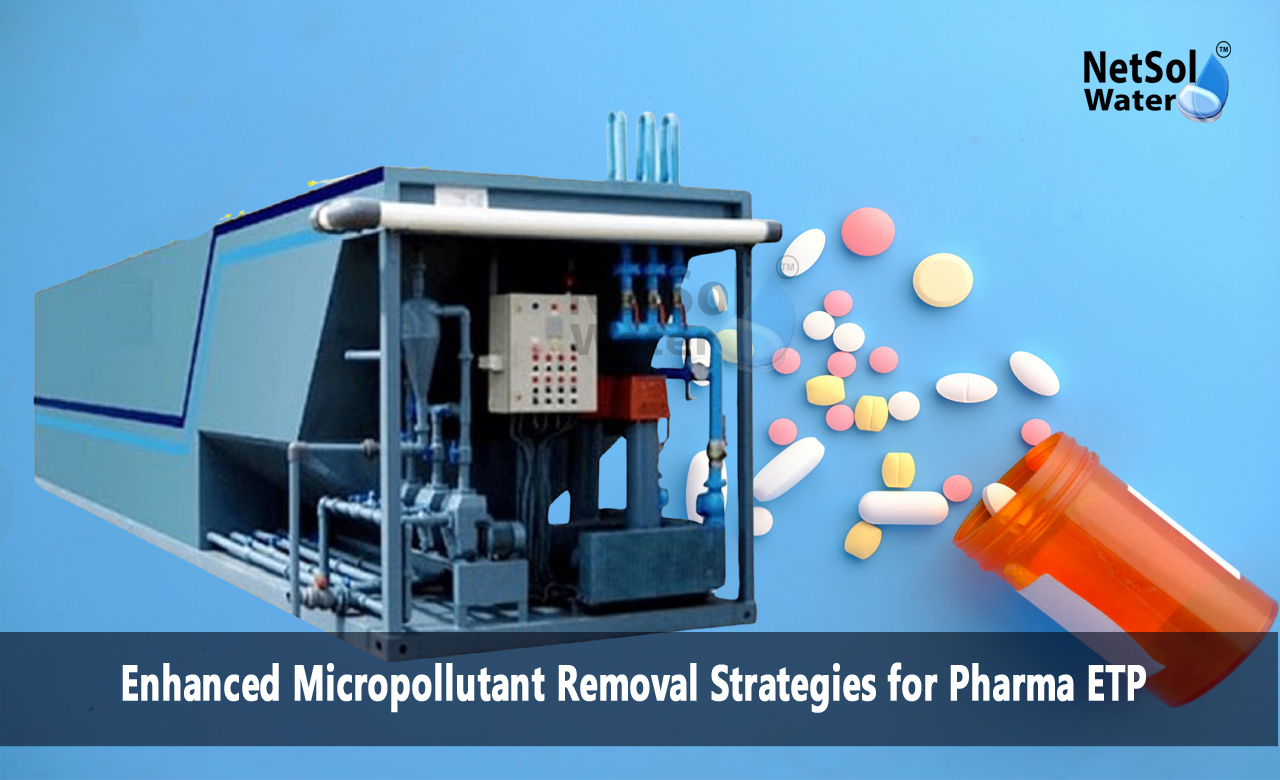Enhanced Micropollutant Removal Strategies for Pharma ETP
Active pharmaceutical ingredients create wastewater containing trace amounts of micropollutants during manufacturing processes. These micropollutants challenge conventional wastewater treatment systems because Effluent Treatment Plants cannot effectively remove these persistent compounds before they enter water bodies. The compounds harm aquatic ecosystems, which has encouraged pharmaceutical companies to enhance their treatment facilities with advanced technologies. Through this blog, we present innovative strategies to enhance micropollutant removal in pharmaceutical ETPs. Our solutions address both regulatory requirements and environmental protection goals while companies maintain compliance and safeguard water resources for future generations.
Micropollutant Challenges in Pharmaceutical Wastewater
Pharmaceutical wastewater treatment faces unique challenges due to micropollutants, which include active pharmaceutical ingredients, residues, metabolites, solvents, catalysts and raw materials. These substances persist at trace concentrations yet demonstrate high biological activity that traditional treatment methods cannot address. The compounds continue to accumulate, which creates lasting environmental damage. Aquatic species experience negative effects as these pollutants disrupt ecological systems and endanger human health through contaminated drinking water. A deep understanding of these challenges enables us to create effective removal strategies. We will explore the essential aspects that highlight the importance of micropollutant removal in pharmaceutical ETPs.
Chemical Properties and Behaviour
Each micropollutant displays unique chemical structures, solubility patterns and biodegradability characteristics that affect treatment processes. Some substances withstand conventional biological treatments, while others create harmful byproducts. Multiple micropollutants interact which produces complex scenarios during treatment.
Environmental Impact Assessment
Water bodies accumulate pharmaceutical micropollutants, which leads to bioaccumulation in ecosystems. Research demonstrates these substances damage fish populations, change aquatic plant development and transform microbial communities. These effects move through the food chain and water systems, creating long-term human health concerns.
Regulatory Framework
Environmental agencies across the globe continue to strengthen discharge limits for pharmaceutical waste. This regulatory pressure motivates companies to implement more powerful treatment technologies. New removal strategies emerge as regulations evolve and expand.
Advanced Physical-Chemical Treatment Methods
Physical-chemical treatments mark significant progress in micropollutant removal technology. These approaches target specific compounds through multiple mechanisms. Treatment plants combine different methods to create comprehensive pollutant removal systems. Modern ETPs incorporate these technologies to achieve superior removal rates. We will examine the most successful physical-chemical treatment options for pharmaceutical wastewater.
Advanced Oxidation Processes
UV-based systems create highly reactive species which break down complex organic compounds. The process adds hydrogen peroxide or ozone to increase effectiveness. This treatment converts persistent pollutants into biodegradable materials.
Membrane Filtration Technologies
Advanced filtration systems employ nanofiltration and reverse osmosis to capture micropollutants. These specialized membranes block contaminants while water passes through. This technology produces high-quality water suitable for environmental release or reuse.
Activated Carbon Treatment
Modern activated carbon systems excel at organic micropollutant absorption. The materials feature extensive surface area and pore structures, which remove trace compounds effectively. Maintenance teams regenerate these systems regularly to maintain peak performance.
Biological Treatment Enhancement Strategies
Biological process improvements significantly impact micropollutant removal success rates. These approaches optimize current biological systems through innovation. Treatment plants merge traditional methods with new technologies, which enhance overall effectiveness. We will explore key strategies that strengthen biological treatment systems.
Specialized Microbial Communities
Treatment facilities develop targeted microbe populations, which improves biodegradation capabilities. These organisms adapt to specific pharmaceutical compounds through extended exposure. Environmental pressures create increasingly efficient treatment processes.
Two-Stage Biological Treatment
Treatment plants implement sequential aerobic-anaerobic processes, which increase the success of micropollutant removal. This method creates varied environmental conditions that support different degradation pathways. The system treats a broader range of compounds effectively.
Enzyme Enhancement
Treatment specialists add specific enzymes which accelerates resistant compound breakdown. These biological catalysts target particular molecular structures. Natural degradation proceeds more quickly through enzymatic assistance.
Conclusion
Improving the removal of micropollutants in wastewater treatment plants for the pharmaceutical industry requires a coordinated approach. Our solutions combine physical, chemical and biological treatment methods. Modern facilities utilize multiple technologies to ensure thorough pollutant removal. Companies looking to upgrade their treatment systems should consider these advanced strategies.
Our environmental engineering team stands ready to guide you through strategy implementation at your facility. We design customized treatment solutions that address your specific challenges.
Contact Netsol Water at:
Phone: +91-965-060-8473, Email: enquiry@netsolwater.com



